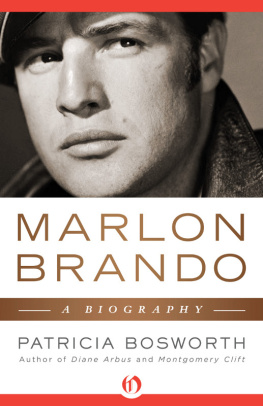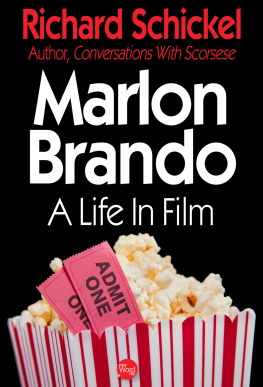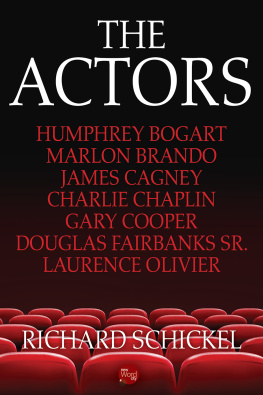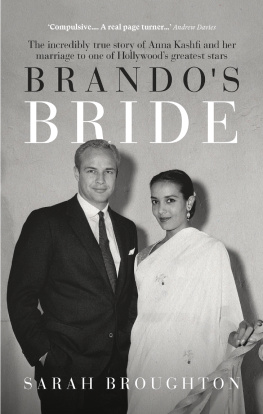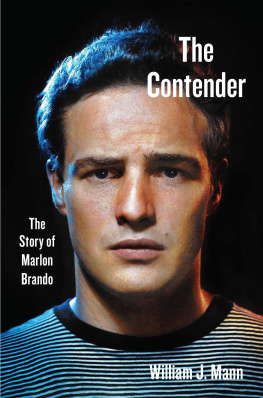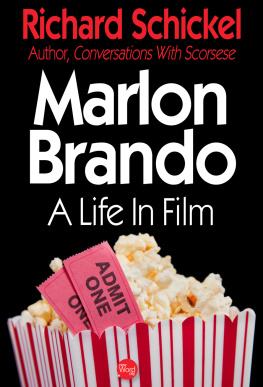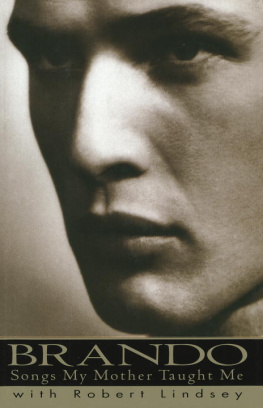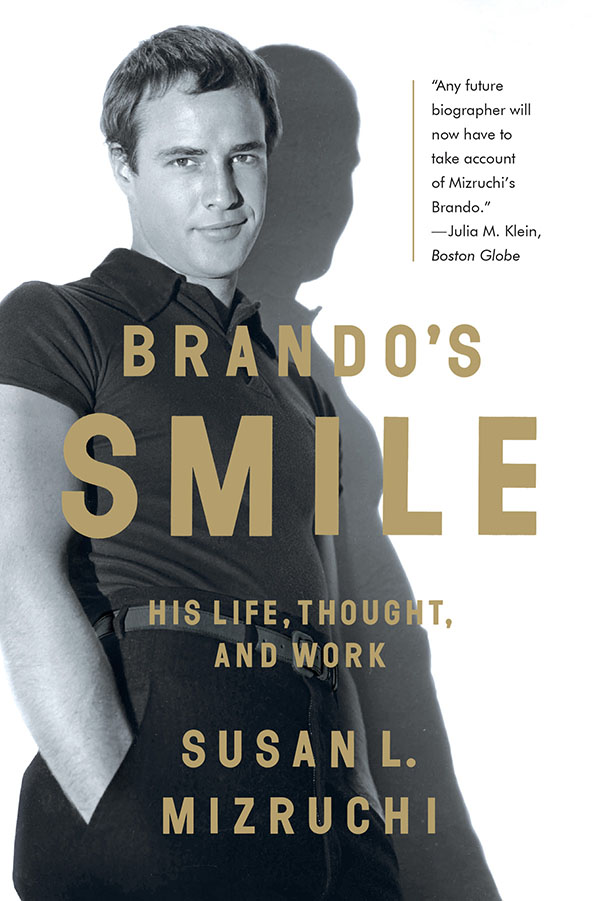
FOREBEARS
M arlon Brandos roots were thoroughly American, which may seem surprising because he was so original and unorthodox. Yet Brandos individuality and nonconformity marked him as American in the deepest sense. He was born in Omaha, Nebraska, on April 3, 1924, entering the world feetfirst, a breech delivery that foreshadowed athleticism: the physicality, even acrobatic vigor that he would bring to every role. His parents, Dorothy Pennebaker Brando and Marlon Brando Sr., were Nebraska natives of Irish, English, and German ancestry. His paternal grandfather, Eugene Brando (b. 1857), was from New York state; his grandmother, Marie Holloway (b. 1868), was from Illinois; all four grandparents on his paternal side were American born.
Little is known about Brando Sr.s mother, Marie, who left Eugene, a harsh, penurious office clerk, in 1900 after seven years of marriage, abandoning their five-year-old son in the process. Raised by paternal aunts and neglected by his father, Marlon Sr. was bitter about his upbringing (though he named his first daughter Jocelyn after one of the aunts). His paternal relatives therefore figured minimally in Marlon Jr.s childhood, and the actor could only recall his paternal grandfathers Victorian rigidity.
Members of Dorothy (Dodie to family and friends) Brandos family, intellectual and eccentric, played a comparatively large role in her sons life with their wide-ranging curiosity, bookishness, and alcohol problems. His maternal great-grandfather, Myles Joseph Gahan (b. 1844), was a renowned Nebraska doctor (chairman of the Nebraska Medical Society and chief surgeon for the Union Pacific Railroad) who transmitted his taste for learning and offbeat spiritualities as well as a predisposition toward alcoholism to the four children he had with Julia Watts Gahan: Dodies mother Bess (b. 1876), Vine, June, and Myles Jr. A lifelong alcoholic and con man, Myles Jr. seems to have been most susceptible to the paternal weakness, while Bess, the eldest, followed the doctors idealism and curiosity.
An Irish immigrant who served as a medic in the Civil War, Gahan had graduated from medical school and acquired surgical skills by the time he moved to Grand Island, Nebraska, in 1875. A town of about 900, Grand Island was mostly German and Protestant, with some Catholics and a few Jews by the time Brandos maternal great-aunt, June Beechly, was born in 1881. According to June, the town had been completely Indian prior to white settlement, and a Gahan, Uncle Jay, was head of the Indian reservation. June recalled an Indian conclave in Grand Island, when she was a teenager. Tribes from all over the country came.... And mother told me I want you to go up there and see the Indians and watch them dance, because youll never see anything like this ever again. Healers and idealists, with an appreciation for the native inhabitants displaced by the progressive settlement that benefited their own family, the Gahans had greater awareness than most of their white brethren. This helped to explain why Bess Gahan was so intent on alleviating the plight of the downtrodden, a vision she conveyed to her daughter Dodie, who in turn conveyed it to her son, Marlon Brando Jr. Besss experience of human weakness through the spectacle of her fathers alcoholism probably also contributed to her sensitivity to suffering. The marriage of Myles and Julia was ruined by Dr. Gahans addiction. According to Brandos Great-Aunt June, her father tried to kill mother twice, while under the influence of alcohol. At the same time, he was a beloved doctor who brought all the children into the world in Grand Island and took care of them.
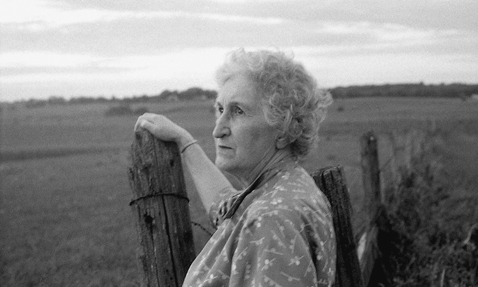
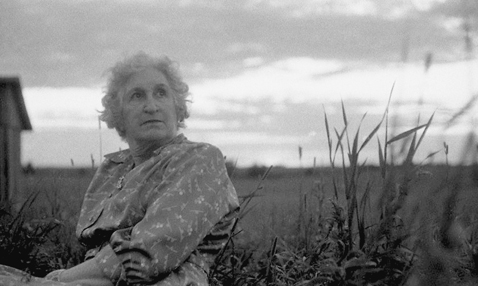
Great-Aunt June in the Midwest, photographed by Marlon Brando Jr. Reproduced by permission of Brando Enterprises, LP.
During one of his sojourns in New York City, Dr. Gahan trained with Dr. J. H. Salisbury, an early advocate of the low-carbohydrate diet and inventor of the Salisbury steak. Dr. Gahan returned to Grand Island and promoted the diet, and some patients boarded at his home to observe the regimen. Among them, according to June, was a very talented, brilliant attorney named Edelstein who was tubercular, and he lived on that diet in our house for about five years. Edelstein was probably the first Jew hosted by the clan, and his presence signaled a bohemian openness shared by three generations of Gahans, Pennebaker-Myerses, and Brandos. Of all the Gahan tendencies, none was more pronounced than their fascination with non-Western religion and philosophy. Dr. Gahan dabbled in every ism that was ever known, including Madame Blavatskys Theosophy, and he believed in reincarnation.
Bess Gahan shared her fathers freedom of thought and found a congenial spirit of adventure in the handsome William John Pennebaker, whom she met in a rooming house in Cripple Creek, Colorado, where she was visiting with her sisters in 1896. Bess was twenty and Will was twenty-eight, and her sister June believed that Bess was simply smitten with the idea that a man that old would fall for her. It was obvious what Bess found appealing in Will, an amateur actor, explorer, and gold prospector who, according to relatives, looked a lot like Marlon Brando Jr. Bess and Will married and their daughter Dodie was born in 1897, like her future husband in the month of January, in Grand Island, where Bess and Will were living. Will soon developed tuberculosis and died in 1899. Bess chose a career instead of settling down as a single mother with her two-year-old daughter. Dodie was sent to live with her grandmother, Julia, and her second husband, O. O. Hefner, in Platte Precinct, Nebraska. Bess moved to Omaha and became secretary to Omaha attorney J. L. Webster, who had famously defended Standing Bear, chief of the Ponca tribe, a case that culminated in US citizenship for Indians. Webster saw the spark in Bess and encouraged her reading and outspokenness on social issues: civil rights for immigrants and blacks, and voting rights for women.
Besss second marriage, in 1905, to Frank Myers, a staid, taciturn Omaha businessman, facilitated the reunion with her eight-year-old daughter Dodie and allowed her to pursue her own goals, among them continuing work with Webster.
In addition to being an individual and a renegade with an outrageous sense of humor, Bess practiced Christian Sciences healing touch. Bess and Dodie were both readers and spent hours discussing books; they also took singing and piano lessons. Dodie also shared Besss enthusiasm for liberal causes. Even as a mother of small children in the 1920s, when initiatives she cared about were on the state ballotfrom improvement of child labor laws and the education of unwed mothers to the reform of health and safety standards, and better conditions for migrant workersDodie drove around Nebraska in a dilapidated jalopy giving speeches and handing out pamphlets. Under her mothers guidance, Dorothy Pennebaker Myers grew into a vivacious young woman, considered talented and beautiful by peers, with dark blonde hair, deep-set blue eyes, and a personality as eccentric and independent as Besss.
Marlon Brando Sr. had also grown up in Omaha. In the fall of 1909, he entered Shattuck Military Academy in Faribault, Minnesota, where he was a model soldier and excelled at sports. Military school was his own choice, motivated perhaps by a desire to remove the taint of a childhood dominated by women. When his money ran out, he transferred to Omahas public Central High School, where he met Dodie in the fall of 1911. He was seventeen and she was fifteen and it seems to have been an attraction of opposites. Marlon Sr. was tall and handsome, with a strong masculine presence but naturally shy. His resolve and desire for acceptance seemed an appropriate counter to Dodies disordered past, while he was drawn to her joie de vivre and independence. Both harbored overwhelming insecurities that would make their future together so tumultuous: Marlon Sr.s distrust and resentment toward women stemming from his mothers flight and the coldness of his aunts; Dodies own experience of how unreliable intimates could be. Their only son would note that neither of his parents knew how to be affectionate toward their offspring.
Next page

